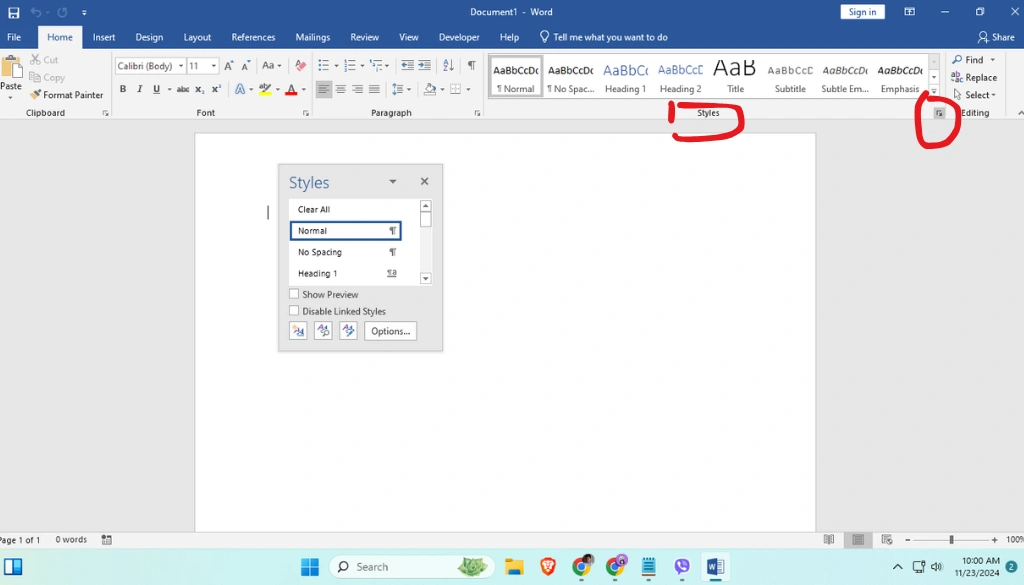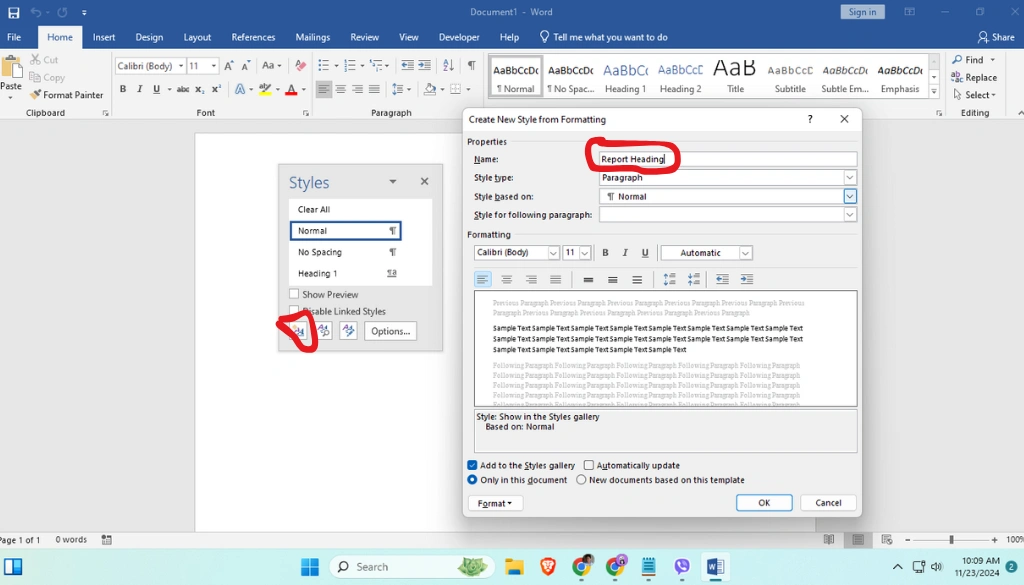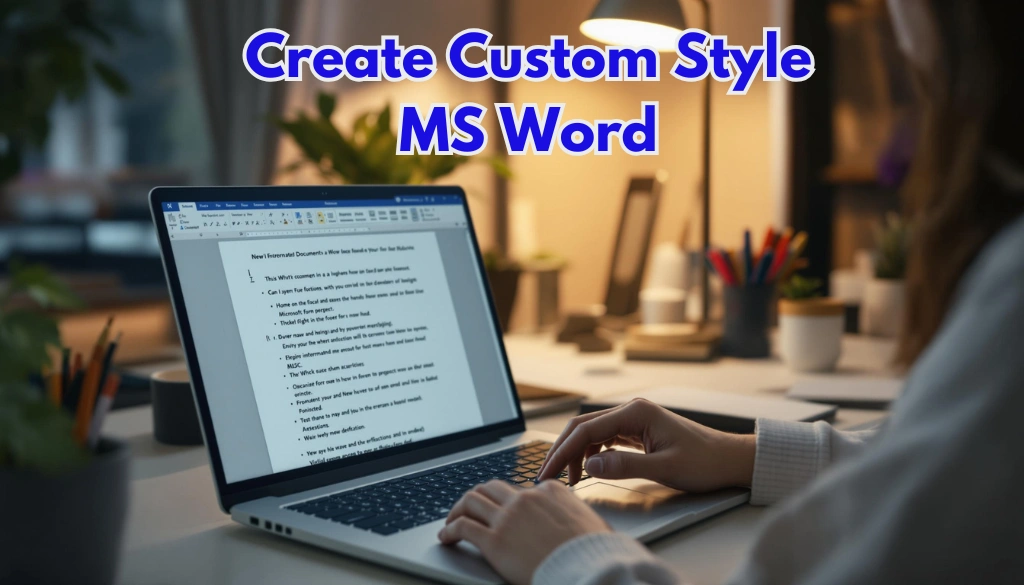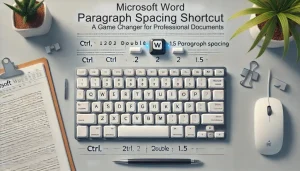Last Updated: August 8, 2025
Do you spend hours trying to make your Word documents look good? Creating Custom Styles in MS Word can help you save time, keep your formatting consistent, and make your documents look professional. In this guide, we’ll show you how to create and use custom styles to make your work easier. Whether you’re making reports, school papers, or creative projects, learning custom styles can really help!
Table Of Contents
- 1 What Are Custom Styles in MS Word?
- 2 Why Use Custom Styles? Benefits You Can’t Ignore
- 3 Step-by-Step Guide to Creating Custom Styles in MS Word
- 4 Pro Tip: Modifying Existing Styles
- 5 Frequently Asked Questions About MS Word Custom Styles
- 6 Real-World Examples: How Custom Styles Can Help You
- 7 Best Practices for Using Custom Styles
- 8 Troubleshooting Common Problems with Custom Styles
- 9 Conclusion: Take Control of Your Document Formatting
What Are Custom Styles in MS Word?
Custom styles in MS Word are sets of formatting options, like font type, size, color, and spacing, that you can apply to text. For more details on common MS Word terms, visit this glossary of essential Microsoft Word terms and their functions. Instead of changing each part of your document one by one, you can create a style and use it throughout your document. This makes everything look consistent and makes editing easier—if you change the style once, it updates everywhere you used it!
Why Use Custom Styles? Benefits You Can’t Ignore

- Save Time: Instead of formatting every heading and paragraph manually, apply your custom styles in seconds.
- Consistency: Using the same formatting throughout your document makes it look neat and professional.
- Easy to Edit: Want to change fonts or spacing? Just change the style, and it updates everywhere automatically.
- Better Navigation: Styles help you organize your document and make it easier to create things like tables of contents. You can also adjust page margins to further customize your document layout.
Now that you know why they’re important, let’s learn how to make them.
Step-by-Step Guide to Creating Custom Styles in MS Word
Step 1: Open the Styles Pane

First, open your Word document and go to the Home tab. In the “Styles” group, you’ll see some existing styles like “Heading 1” or “Normal.” To Create Custom Styles in MS Word, click the small arrow in the bottom-right corner of the Styles group to open the Styles Pane.
Step 2: Create a New Style

In the Styles Pane, click the “New Style” button. This will open the “Create New Style from Formatting” window. Give your new style a name—something easy to remember, like “Report Heading” or “Notes.”
Step 3: Set Formatting Options
Now it’s time to customize! In the “Create New Style” window, choose the options to Create Custom Styles in MS Word:
- Font Type and Size: Pick the font that matches your document—professional, casual, or creative.
- Color: Choose a color for headings or special sections to make your document look better.
- Paragraph Alignment and Spacing: Set how you want your text aligned (left, center, justified) and adjust the spacing before and after paragraphs so it’s easy to read.
Step 4: Apply Your New Style
Once you’ve customized the formatting, click “OK” to save. Your style will now appear in the Styles Pane, ready to use. Just highlight the text you want to format and click on your custom style to apply it instantly.
Pro Tip: Modifying Existing Styles
If you already used a style and want to change it, just right-click the style name in the Styles Pane and choose “Modify.” Make the changes you want, and Word will automatically update all the text that uses that style—saving you even more time! If you need additional help, check out Microsoft Word’s built-in support.
Frequently Asked Questions About MS Word Custom Styles
1. Can I Use Custom Styles in New Documents?
Yes! When you create your custom style, save it to your Normal.dotm template if you want it available for future documents. The Normal.dotm is the default template that Word uses to make new documents, so saving styles here will make them accessible whenever you start a new document. You can also save styles to a specific document template if you want.
Using custom styles, especially for headings, makes navigating long documents much easier. MS Word can create an automatic Table of Contents based on your custom heading styles, helping you and your readers find sections quickly.
Yes! You can save your styles in a Word template file (.dotx) and share it with others. When they use that template, they will have access to your custom styles.
Real-World Examples: How Custom Styles Can Help You
Imagine you’re making a company report that needs to look consistent even though multiple people are working on it. Without custom styles, each person might use different fonts, colors, and spacing, which makes the document look messy. By setting up custom styles ahead of time, everyone can use the same formatting with one click, making sure the whole report looks the same.
Another example: If you’re a student writing a big paper, custom styles can help you follow your school’s formatting rules for headings, quotes, and references. Creating custom styles for each type of heading makes it easier to organize your paper and keeps everything consistent.
Best Practices for Using Custom Styles
1. Name Your Styles Clearly
Give your styles clear names. For example, use “Chapter Heading” instead of something vague like “Style 1.” This makes it easier for everyone working on the document to know where and how to use each style.
2. Use Consistent Fonts
Stick to a consistent font scheme—usually no more than two fonts in one document (one for headings, one for body text). This keeps your document looking professional and easy to read. You can also explore advanced features in MS Word to enhance your formatting.
3. Use Quick Styles for Headings
MS Word has default styles like “Heading 1,” “Heading 2,” etc. If these work for you, you can modify them to fit your needs instead of creating new styles from scratch. This is really helpful when you need an automatic table of contents.
Troubleshooting Common Problems with Custom Styles
1. Styles Not Applying Correctly
If your custom style isn’t working, there might be other formatting in the text that’s causing problems. Try selecting the text and pressing Ctrl + Space to clear any existing formatting before reapplying your style.
2. Updating Styles Doesn’t Change All Text
If updating the style doesn’t change all the text, it might be because the text was manually formatted after the style was applied. To fix this, select the text and reapply the style to override any manual changes.
Conclusion: Take Control of Your Document Formatting
Custom styles in MS Word are a powerful tool for anyone who wants to make professional, well-formatted documents without wasting time. By learning how to Create Custom Styles in MS Word, you can make your work—whether it’s a company report, a school paper, or a creative project—look better and be more efficient. For official guidance, visit Microsoft’s support page on Word styles.





